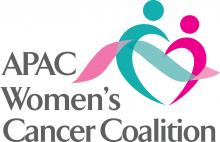Against a backdrop of rising cancer incidence worldwide, cancers affecting women are becoming more common and impactful. Women are impacted differently than men across many different cancers, with distinct gender-related risk factors which impact incidence, care, and mortality. Female breast cancer surpassed lung cancer as the most frequent newly diagnosed cancer worldwide in 2020, and the incidence and mortality of cervical cancer, the second most common cancer affecting women, is rising. [1]
Both diseases are increasing in incidence in the Asia Pacific (APAC) region as a demographic transition from lower to higher income status is accompanied by rising cases and mortality. Breast cancer incidence is expected to rise by 20.9% in Asia between 2020 and 2030 and mortality to increase by 27.8%. Both exceed the anticipated global rates. [2]
Women in the region are already more heavily affected by cervical cancer due to factors including inadequate or inaccessible screening and vaccination programmes and socioeconomic causes including stigma and lack of awareness. Cases and mortality are set to rise as a consequence of ageing populations, both surpassing the global increase; cervical cancer incidence by 18.9% over 2020 to 2030 and mortality by 24.9%.[2]
“Impact and opportunity: the case for investing in women’s cancers in Asia Pacific” is a report by Economist Impact, commissioned by the APAC Women’s Cancer Coalition and supported by Roche. In this report, the burden of women’s cancer (specifically breast and cervical cancer) is examined in six countries in the APAC region: India, Indonesia, Malaysia, the Philippines, Thailand and Vietnam. Using a benchmarking scorecard, the research examines and compares the quality of policies and programmes to tackle cancer based on recommendations set by the World Health Organisation (WHO). The research identifies the following regional opportunities for improvement as well as country-specific calls to action, which are presented in six accompanying country snapshot reports.
- Countries must demonstrate greater political will and leadership, and implement and update national elimination plans and strategies to align with WHO targets for cervical and breast cancer
- Enhance performance tracking by building immunisation, screening and patient outcome registries for cervical and breast cancer
- Focus on primary prevention by rolling out national immunisation programmes (HPV immunisation for cervical cancer) and secondary prevention by rolling out organised population-based national screening programmes (for both cervical and breast cancer)
- Referral and treatment pathways for patients should be clear and well defined
- Governments should prioritise women’s cancers as key policy areas to achieve national targets for immunisation, screening and treatment
- Governments and global funding bodies should devise and implement effective and sustainable funding models
- Services and programmes should be patient-centric and tailored to needs of affected populations in different settings
- Consider integrated, holistic approaches to tackle resource and capacity challenges
References:
[1] Sung, H.; Ferlay, J.; Siegel, R. L.; Laversanne, M.; Soerjomataram, I.; Jemal, A.; Bray, F., Global Cancer Statistics 2020: GLOBOCAN Estimates of Incidence and Mortality Worldwide for 36 Cancers in 185 Countries. CA Cancer J Clin 2021, 71 (3), 209-249.
[2] WHO International Agency for Research on Cancer. Cancer tomorrow. Available from: https://gco.iarc.fr/tomorrow/en/dataviz/tables?sexes=2&cancers=40&populations=903_904_905_908_909_935&age_start=4&years=2040&mode=cancer&group_populations=1&multiple_populations=1&types=1






